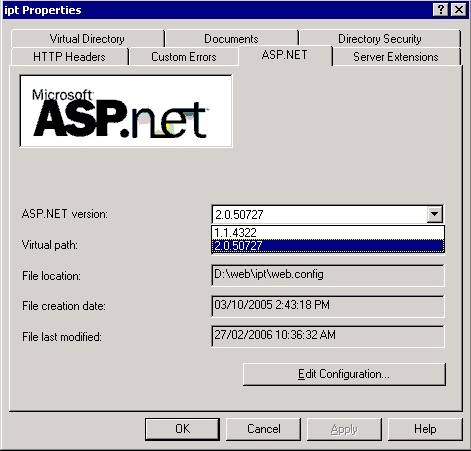Having got Visual Studio 2005 into my hot little hands, I’ve upgraded one of my projects from VS 2003 to 2005, and .Net Framework 1 to 2. Just loading it into VS2005 seemed to do most of the work for me.
I did find the new VS gives out a few very informative warnings in the code editor, such as unused variables. Good stuff (and shame on me for being so sloppy during repeated revisions of code).
The other thing I found was a few things had changed in the Web.Config file format. After much fiddling I found it easier to create a fresh one and copy my custom settings into it, than try and convert the old one over.
The only catch is that after copying it all over to the test server, it didn’t work. Turns out apart from installing the .Net 2.X Framework on your server, you’ll also need to get into the IIS setup and make sure it knows it’s now a 2.X application.

Other than that, pretty smooth. The one gotcha on my actual code was a custom button click routine that took the form QueryString and stripped out all the ASP.Net guff I didn’t want needed a bit of tweaking, as in .Net 2.0 there’s an extra __EVENTVALIDATION value. (My version is adapted from a 15seconds.com article, and is used to produce tidy QueryStrings that can be bookmarked.)

